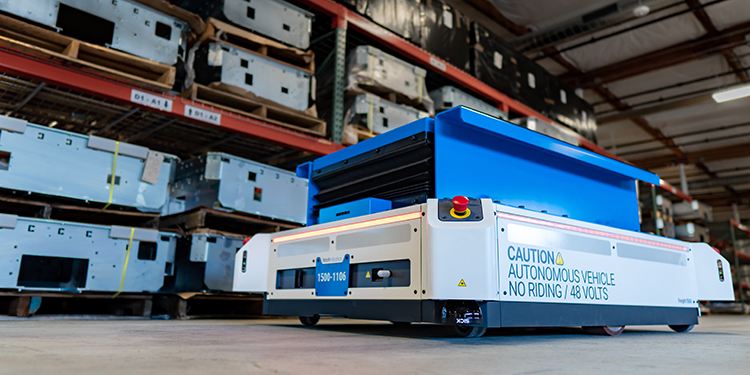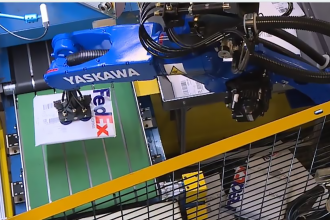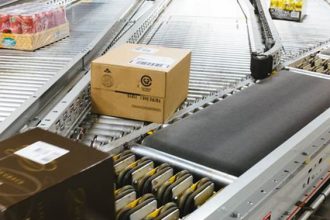Why Pairing Forked AGVs With AMRs Delivers Better ROI

Companies considering an investment in mobile autonomous vehicles — such as autonomous mobile robots (AMRs) and automatic guided vehicles (AGVs) — sometimes erroneously believe that they have to exclusively choose one solution or the other. Often, as is the case with most material handling systems, the optimal solution is actually one that combines multiple technologies. Or, in this example, leverages the strengths of both forked AGVs and transport AMRs. By strategically using the two vehicles together in a facility, an operation will benefit in multiple ways, all of which contribute to a better return on investment (ROI).
The concept stations forked AGVs in designated areas — such as pallet rack or floor storage, or at shipping or receiving docks — to primarily perform vertical lifting maneuvers. There they lift and lower pallet loads to and from elevated storage positions, or autonomously load or unload trailers. Instead of using the forked vehicles to then transport the loads through the facility to their next destination (something that might take up 80% of their operating hours), pallet load capacity (from 1,000 to 3,300 pounds) AMRs carry the pallets on their top surface. The forked AGVs either directly place the load on, or remove the load from, either an AMR or a pickup/drop-off station that buffers the loads while serving as the interface between the two autonomous vehicles.
The advantages of this combined solution approach include:
- Limiting the overall capital equipment expenditure by only requiring a small fleet of more expensive forked AGVs and a larger fleet of less expensive pallet-handling AMRs.
- Significant reduction in handling time by stationing the forked AGVs in specific areas and leaving the long-haul travel to the fleet of AMRs; the AGVs no longer have to leave their primary workspace to transport loads, allowing them to be far more efficient. Additionally, because AMRs are programmed to navigate intelligently around an obstacle (whereas AGVs typically slow down or stop when they encounter an object in their prescribed path), transport time is reduced.
- Increased production — due to the uptick in the number of loads that can be transported simultaneously — as multiple AMRs can be deployed to handle the movement of multiple loads.
- Longer lifespan of the forked AGVs, because wear and tear associated with repeated, long distance travel is eliminated.
- Easy, and more affordable, expansion of the system by deploying additional AGVs and AMRs to increase capacity. Some AMRs are offered in an “as a service” acquisition model, allowing more of the units to be inducted into the system as needed, which further minimizes the overall capital equipment investment. Further, AMR’s are generally managed by Cloud-based software, making the deployment of additional vehicles and expansion of their operating footprint easy to accomplish
- Minimal software programming and integration is required, as the AGVs are only programmed to work within the confines of a specific area, and the AMRs map the environment, allowing them to navigate without guidance markers embedded in the floor or attached to walls.
Additionally, utilizing forked AGVs is inherently safer than manually operated forklifts with human drivers who might miscalculate a turn and collide with a storage rack or building column. Further, because they are outfitted with a full complement of sensors that allow them to safely and precisely align with an AMR and place the load on it, or onto a pickup/drop-off station, the risk of a forklift driver improperly interfacing with (and damaging) the AMR is eliminated.
Want to learn more about combining AGVs and AMRs? Connect with the members of the Mobile Automation Group (MAG).



